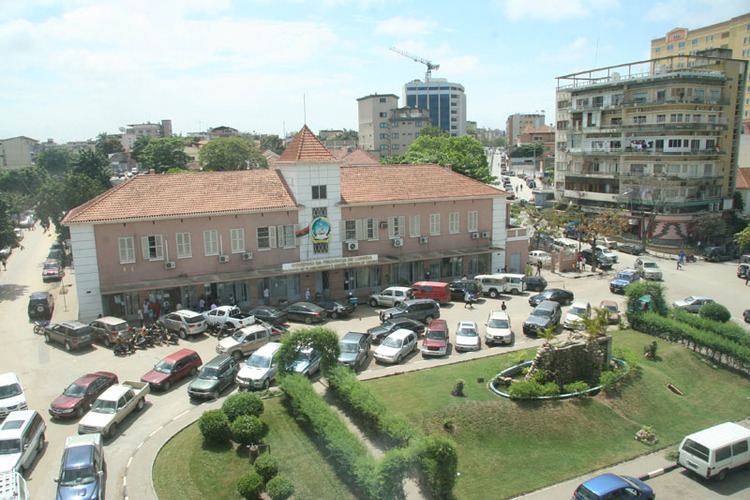Area 9.6 km² | ||
 | ||
Miss ingombota 2009
Ingombota is one of the six urban districts that make up the municipality of Luanda, in the province of Luanda, the capital city of Angola.
Contents
Map of Ingombota, Luanda, Angola
Ingombota has 9.6 square kilometers and about 370 000 inhabitants. Limited to the west through the Atlantic Ocean, with the northern city of Sambizanga, east of the county Rangel and south by the municipality of Maianga .
The word Ingombota originates from Kimbundu, while existing two theories as to its origin. One saying Ingombota comes from the words joint and ingombo kuta, meaning place where there are abundant quiabos. Another possibility would be to join the words Ngombo kuta and meaning a refuge for outlaws (possibly slaves), giving rise to the word Ngombota, in Portuguese to Ingombota .
The Ingombota district comprises the municipalities of Ingombota, Maculusso, Kinanga, Ilha do Cabo and Patrice Lumumba and occupies the center of the city of Luanda.
The Luanda Island is a zone of laser, with sandy beaches and stunning views of the Baía de Luanda. Here lies the Igreja da Nossa Senhora do Cabo, the oldest church of Angola.
The Baixa (lower city) district concentrates the financial and commercial activities in the capital. Headquarters of the largest companies operating in Angola are located here, both domestic and foreign, mainly around the Avenida 4 de Fevereiro. Ingombota also has several hotels, numerous restaurants, clubs, bars, bakeries, kiosks and all kinds of shops, besides the ever-present peddlers market, the responsibility of zungueira.
In the so-called Cidade alta (upper town) lies, among others, the Presidential Palace, several ministries, the Assembleia Nacional de Angola near the Fortaleza de São Miguel and the Jesuit Church, where Paulo Dias de Novais, the founder of the City of Luanda is buried. The area occupies a lofty position on the city and is a popular location for tourists and locals, with heavily guarded police all around, thanks to the proximity of the Presidential Palace.
In the Ingombota district are also located the Museum of the Armed Forces of Angola, the National Museum of Anthropology and the National Museum of Natural History of Angola.
